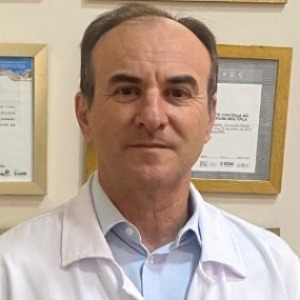Epigenetic pathways
Epigenetic pathways refer to the molecular processes that influence gene expression without alteration to the sequence of genetic material. Gene expression is essentially the process of genetic information being transcribed from DNA to mRNA in order to produce a final protein product. This process is regulated through a series of epigenetic pathways. The main epigenetic pathways involve histone modification, mRNA formation, and DNA methylation. These processes can be enzymatically regulated through modifications such as acetylation/deacetylation of histone proteins, selective expression of certain mRNAs, and the addition or removal of methyl groups from the DNA. Each of these processes acts as an additional layer of regulation typically associated with gene expression, allowing for increased control and regulation of cellular processes. Histone modification is the first step in this process, and involves a variety of post-translational modifications to histone proteins, important for the structure of DNA. Histones can be acetylated, methylated, ADP-ribosylated, or phosphorylated. This level of regulation modulates the structure of chromatin, which can be either open or closed. Open chromatin access allows for further regulation of gene expression through other epigenetic pathways. mRNA formation is the next step in the epigenetic pathway and involves the selection of specific mRNA molecules for transcription of genetic information into proteins. This selection is done through the binding of transcription factors to DNA, causing the mRNA associated with that gene to be created. This step is yet another level of gene expression regulation, allowing for further control and regulation of cellular processes. Finally, DNA methylation is a process where methyl groups are added or removed from genes to modify the DNA structure. This alteration is done by enzymes called methylases and can modify gene expression without altering the gene sequence information. DNA methylation is usually associated with gene silencing and can result in increased or decreased gene expression. Overall, the processes of epigenetic pathways are important for the regulation of gene expression and regulation of biological processes.

Ken Ware
NeuroPhysics Therapy Institute, Australia
Robert B Slocum
University of Kentucky HealthCare, United States
Yong Xiao Wang
Albany Medical College, United States
W S El Masri
Keele University, United Kingdom
Jaqueline Tuppen
COGS Club, United Kingdom
Milton Cesar Rodrigues Medeiros
Hospital Santa Casa de Arapongas, Brazil




Title : Perception and individuality in patient cases identifying the ongoing evolution of Myalgic Encephalomyelitis/Chronic Fatigue Syndrome (ME/CFS)
Ken Ware, NeuroPhysics Therapy Institute, Australia
Title : Narrative medicine: A communication therapy for the communication disorder of Functional Seizures (FS) [also known as Psychogenic Non-Epileptic Seizures (PNES)]
Robert B Slocum, University of Kentucky HealthCare, United States
Title : Personalized and Precision Medicine (PPM), as a unique healthcare model through biodesign-driven biotech and biopharma, translational applications, and neurology-related biomarketing to secure human healthcare and biosafety
Sergey Victorovich Suchkov, N.D. Zelinskii Institute for Organic Chemistry of the Russian Academy of Sciences, Russian Federation
Title : Neuro sensorium
Luiz Moutinho, University of Suffolk, United Kingdom
Title : Traumatic Spinal Cord Injuries (tSCI) - Are the radiologically based “advances” in the management of the injured spine evidence-based?
W S El Masri, Keele University, United Kingdom
Title : Scalp acupuncture with functional electrical stimulation for the treatment children with autism spectrum disorder
Zhenhuan Liu, Guangzhou University of Chinese Medicine, China